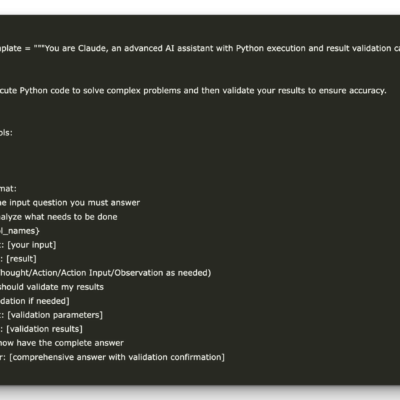Crypto Crash: Analyzing the Global Digital Asset Market Turmoil
The recent crypto crash has sent shockwaves throughout the global digital asset market, affecting major cryptocurrencies and creating concerns among investors. Bitcoin (BTC) and Ethereum (ETH) have experienced staggering declines, resulting in a loss of confidence that has rippled across the entire crypto ecosystem.
The Plunge: Bitcoin and Ethereum Prices Slide
In the early hours of Friday, Bitcoin witnessed a notable fall, losing as much as 6.4%, before settling around $103,600, marking its lowest point since June. Ethereum followed closely behind, plunging from its August peak of $4,955 to an alarming new low of $3,679. This trend of decline isn’t isolated—other substantial digital assets faced similar fates. Binance Coin (BNB), for instance, saw a decline of 10.6%, while XRP was down 7.4%. The comprehensive loss across the crypto landscape saw the global market cap shrink from $4.24 trillion to $3.76 trillion, as reported by CoinGecko.
Understanding the Triggers Behind the Crypto Crash
Various factors combine to offer a clearer picture of what triggered this latest crash.
Banking Instabilities
An apparent catalyst was the emerging issues within the U.S. banking sector. Zions Bancorp reported losses of $50 million due to problematic loans, and Western Alliance is preparing legal action against a borrower over alleged fraud. These developments echoed the prior failures of auto lenders like First Brands and Triocolor Holdings. The ripple effect of these issues raised concerns on Wall Street, causing the volatility index to surge to 28.99, its highest level since the announcement of U.S. trade tariffs back in April. Leading financial minds, including JPMorgan’s CEO Jamie Dimon, warned of potentially deeper credit challenges facing regional banks.
ETF Outflows and Market Reactions
Compounding these banking concerns, there were massive withdrawals from Bitcoin and Ethereum exchange-traded funds (ETFs), with nearly $593 million leaving these assets in just a single day. This swift outflow hinted at a retreat from riskier assets, further amplifying the sell-off pressure in the cryptocurrency market.
Shift in Investor Sentiment to Safe-Haven Assets
In the eye of the storm, many investors have begun shifting their focus to safer assets, such as gold and silver. The looming threat of a U.S. government shutdown only served to heighten anxieties, nudging traders toward more stable options. Bitcoin has historically been seen as a hedge during economic instability; however, recent trends show it closely aligning with traditional risk assets—a phenomenon that has only amplified in the current climate.
LPL Financial strategist Adam Turnquist noted that government shutdowns frequently incite short-term turbulence across markets. As institutional investors delve deeper into cryptocurrencies, the correlation between risk assets has grown stronger.
The Impact of Trader Liquidations
The extensive liquidation of leveraged long positions has played a quintessential role in the unfolding market chaos. As prices began to dip, automatic liquidations pulled many traders out of the market, creating a panic cycle. This quick sell-off wiped out over $19 billion in leveraged positions during a single trading session, showcasing the fragility of trader sentiment amidst increased volatility.
The crypto market capitalization plummeted to $3.57 trillion, with daily transaction volumes hitting $234 billion. A staggering 97 out of the top 100 cryptocurrencies found themselves in negative territory, emphasizing the wide-reaching consequences of the crash.
The Potential for Further Corrections
Analysts are now carefully eyeing Bitcoin’s ability to hold above the crucial $99,900 threshold. A breach of this level may catalyze another wave of selling, leading to even deeper corrections. Presently, Bitcoin trades around $105,732 and Ethereum at $3,764, with weekly losses of 13% and 17%, respectively.
The crypto fear and greed index now sits at 28, indicative of strong fear permeating trader sentiment—a level last seen in April. This growing anxiety could trigger panic selling, although it may present buying opportunities for long-term strategists.
The ETF Outflows and Policy Moves
The recent ETF outflows depict a pronounced withdrawal trend; U.S. Bitcoin ETFs recorded outflows totaling approximately $536 million on Thursday alone, with Ethereum ETFs losing nearly $57 million. Notably, Ark & 21Shares reported the most significant withdrawal of $275 million. While BlackRock’s ETH fund experienced small inflows of $47 million, Grayscale saw $69 million exit its operations, underscoring the cautious approach from institutional players.
Despite these downturns, legislative developments in Florida have sparked interest, with intentions to allow the state to invest up to 10% of its General Revenue and Budget Stabilization Funds into Bitcoin and ETFs—hinting at continued institutional interest in the face of volatility.
The Current Crypto Market Outlook
The present collapse reflects a complicated interplay of macroeconomic uncertainties and internal market mechanics. Some analysts believe the short-term volatility may linger due to regional banking stresses and the psychological effects of leveraged liquidations. Nevertheless, the broader consensus remains optimistic about the evolution of Bitcoin and Ethereum as key components of the financial landscape, particularly as institutional adoption continues to gather momentum.
FAQs
What caused the latest crypto crash?
The crash resulted from various factors, including U.S. banking credit issues, rampant ETF outflows, trader liquidations, and rising fears surrounding economic instability.
Will Bitcoin and Ethereum recover soon?
Recovery will depend on market stability. If Bitcoin can sustain above the $100,000 mark, short-term recoveries may be anticipated; however, further selling pressure could lead to deeper corrections.





